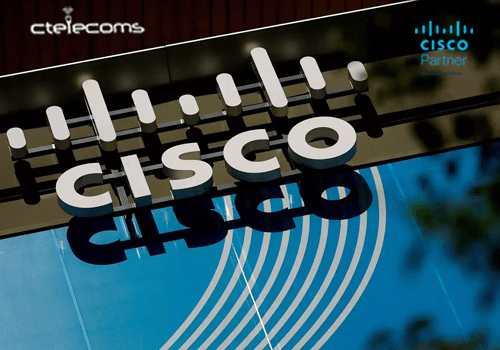

2023/09/26 Datacenter Solutions 1113 visit(s) 3 min to read
Ctelecoms

Artificial intelligence (AI) is transforming the world of data and networking, creating new challenges and opportunities for businesses of all sizes. AI applications require massive amounts of data to be processed and transferred at high speeds, with low latency and no packet loss. To meet these demands, Ethernet networks need to evolve and adapt to support AI workloads.
In this blog, we will explore how Cisco, a leader in data center networking, is shaping its strategy for Ethernet-based AI networks. We will look at how Cisco is contributing to the development of new Ethernet standards and technologies, as well as offering a blueprint for customers who want to use their existing data center Ethernet networks to support AI workloads now.
Cisco has been a key contributor to the development of Ethernet standards and technologies over the years, and now it is one of the core vendors driving the Ultra Ethernet Consortium (UEC), a group that aims to enhance Ethernet for AI infrastructures.
Some of the areas that the UEC is focusing on include:
While the UEC is working on enhancing Ethernet for future AI networks, Cisco is also offering a blueprint for customers who want to use their existing data center Ethernet networks to support AI workloads now. The blueprint is based on Cisco’s Nexus 9000 data center switches, which have the hardware and software capabilities to provide the right latency, congestion management mechanisms, and telemetry to meet the needs of AI applications.
One of the key technologies that enable Nexus AI-based networking is Remote Direct Memory Access Over Converged Ethernet, version 2 (ROCEv2), which allows data to be transferred directly between the memory of two devices without involving the server CPU. This reduces latency and complexity, as well as boosts throughput.
Another important technology is Explicit Congestion Notification (ECN), which enables a lossless Ethernet network by monitoring for network congestion or other situations where packets could get dropped and throttling back the network to ensure that doesn’t happen. Lossless Ethernet networks are not only essential for AI networking but also for today’s VOIP or video environments.
With these technologies, along with tools such as Cisco Nexus Dashboard Insights for visibility and Nexus Dashboard Fabric Controller for automation, Cisco Nexus 9000 switches become ideal platforms to build a high-performance AI network fabric.
Cisco’s strategy for Ethernet-based AI networks shows its commitment to future-proofing Ethernet for AI and helping customers grow their business with the latest tools and features from Cisco.